#Prince Francis Joseph of Battenberg
Text
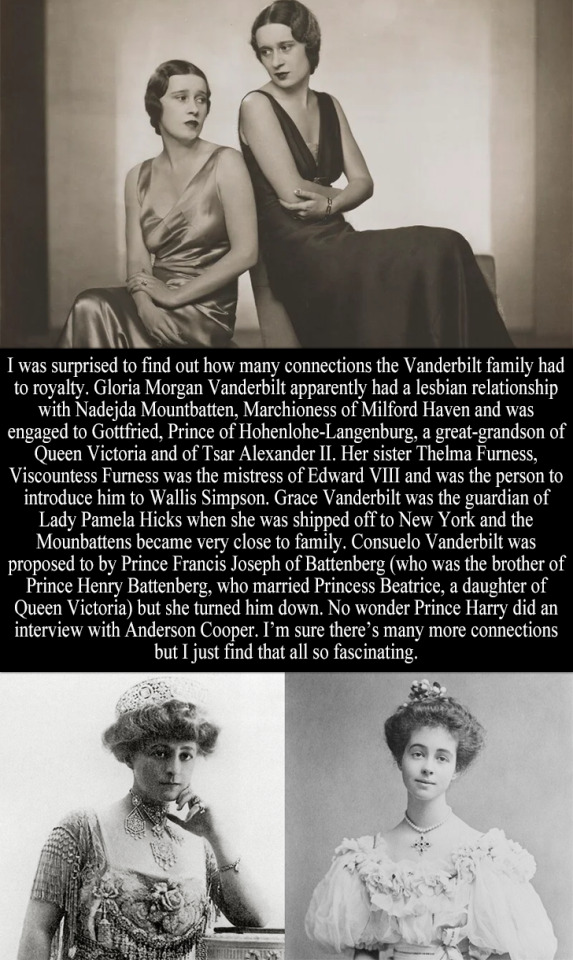
“I was surprised to find out how many connections the Vanderbilt family had to royalty. Gloria Morgan Vanderbilt apparently had a lesbian relationship with Nadejda Mountbatten, Marchioness of Milford Haven and was engaged to Gottfried, Prince of Hohenlohe-Langenburg, a great-grandson of Queen Victoria and of Tsar Alexander II. Her sister Thelma Furness, Viscountess Furness was the mistress of Edward VIII and was the person to introduce him to Wallis Simpson. Grace Vanderbilt was the guardian of Lady Pamela Hicks when she was shipped off to New York and the Mounbattens became very close to family. Consuelo Vanderbilt was proposed to by Prince Francis Joseph of Battenberg (who was the brother of Prince Henry Battenberg, who married Princess Beatrice, a daughter of Queen Victoria) but she turned him down. No wonder Prince Harry did an interview with Anderson Cooper 😅. I’m sure there’s many more connections but I just find that all so fascinating.” - Submitted by Anonymous
32 notes
·
View notes
Text



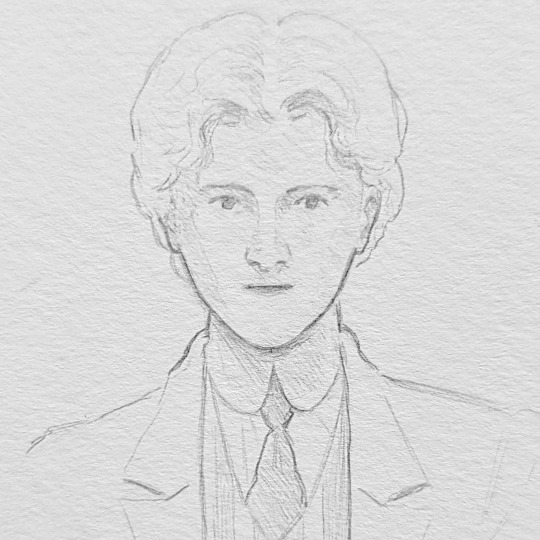
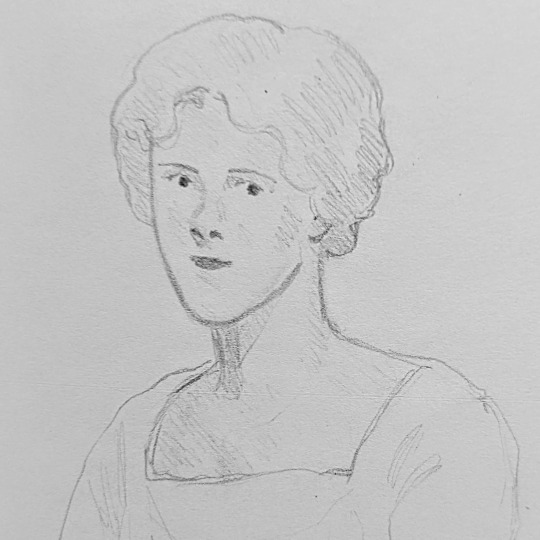
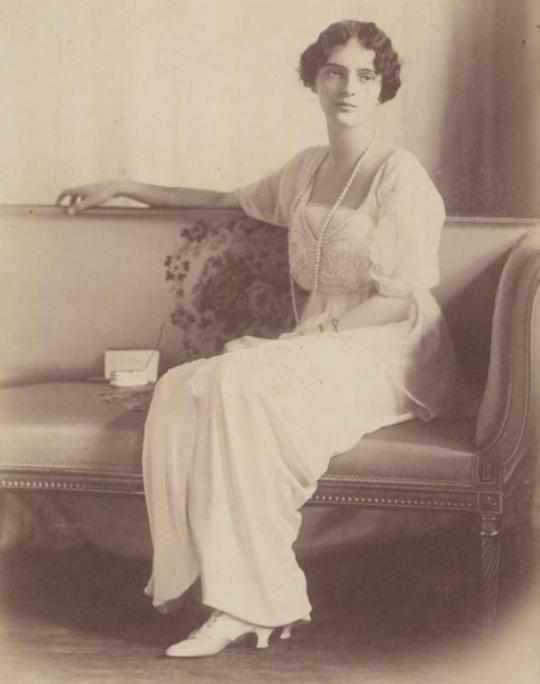





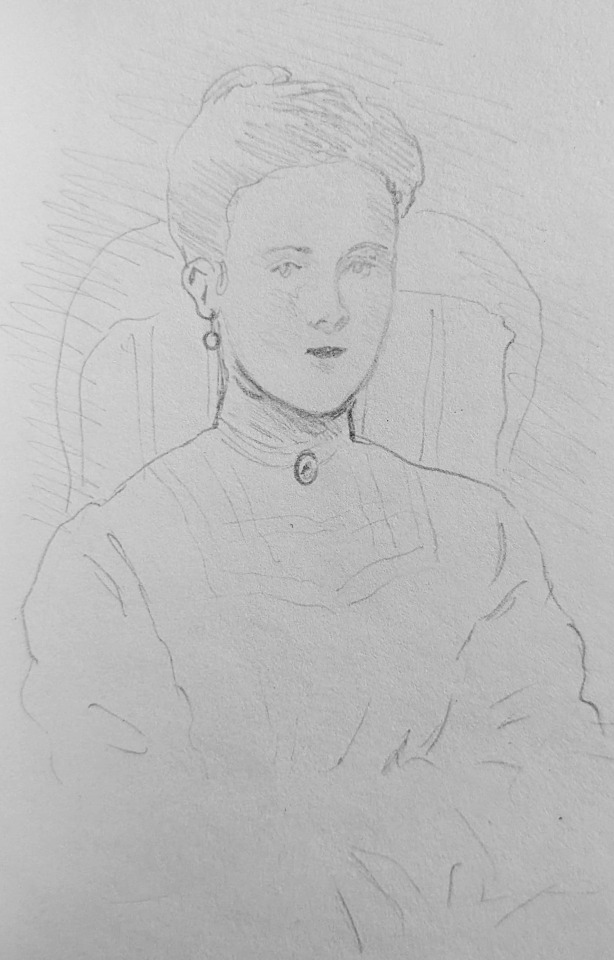




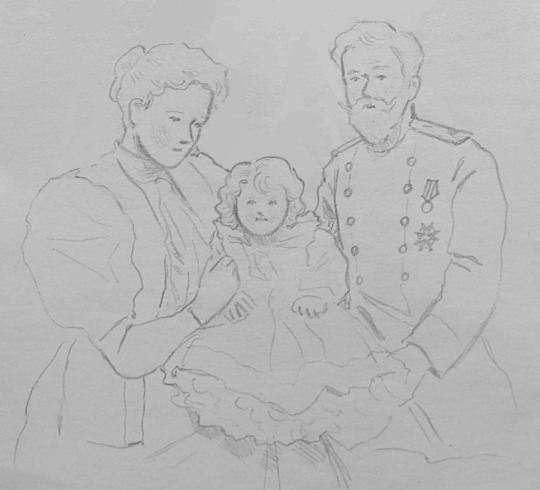
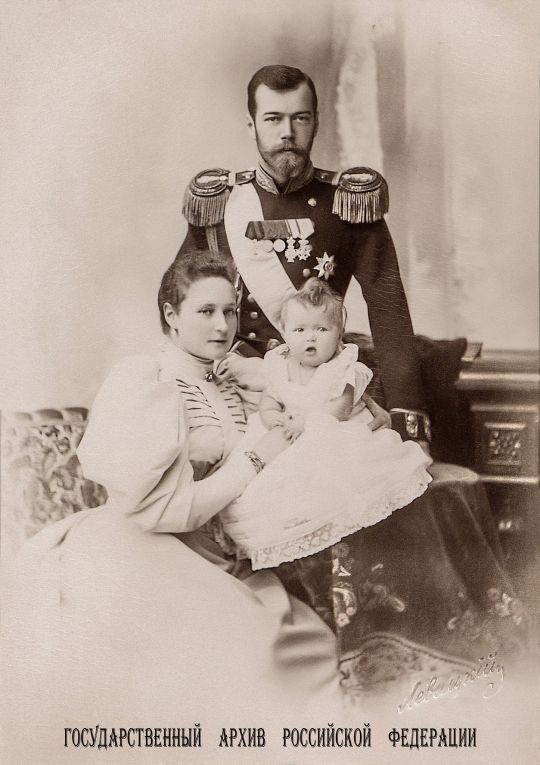
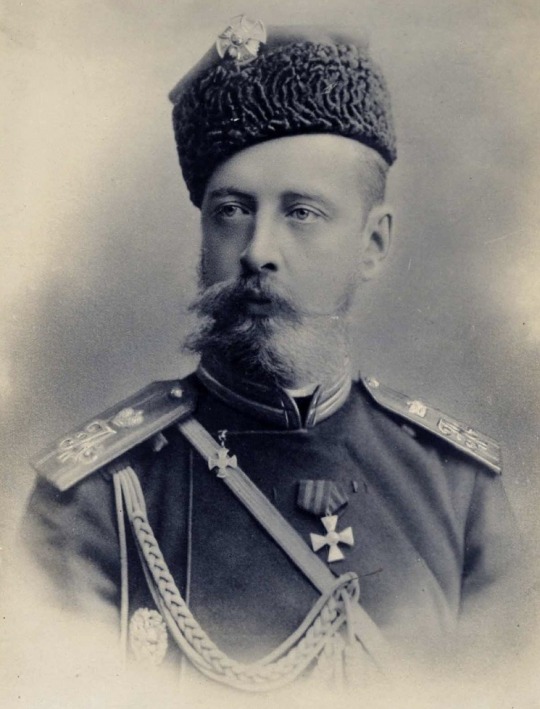
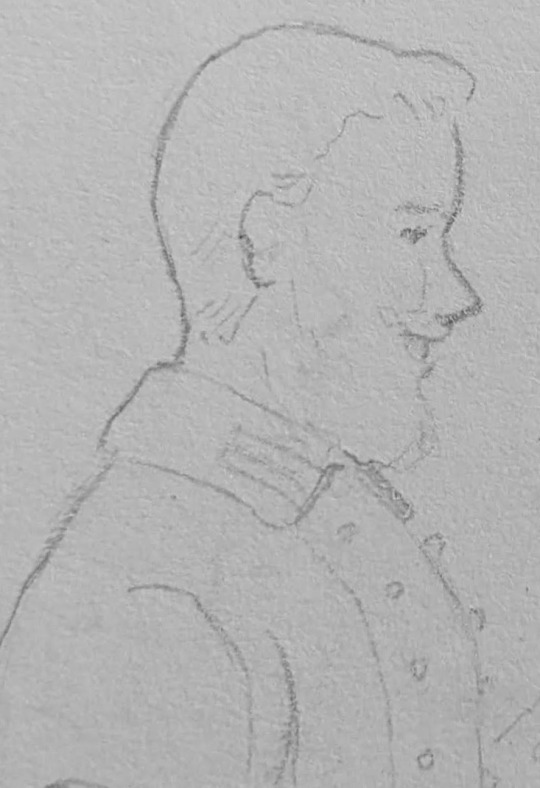
Historical figures in my novel. Prince Felix Yusupov, Prince Harald of Denmark, Princess Irina of Russia, Prince Francis Joseph Battenberg, Count Felix Sumarokov-Elston, Princess Zinaida Yusupova, Princess Dagmar of Denmark, Crown Prince and Princess Frederik VIII and Louise of Denmark, Emperor Nikolai II of Russia and Princess Alix of Hesse with their eldest daughter Olga, and Major-General Keller. All the drawings are mine :)
12 notes
·
View notes
Text

Prince Francis Joseph and Princess Anna of Battenberg at Wolfsgarten, 1907.
Source: Hessian State Archive.
#prince francis joseph of battenberg#princess anna of battenberg#princess francis joseph of battenberg#battenberg#hesse#hesse-darmstadt#german royal#german royalty#1907#1900s
40 notes
·
View notes
Photo
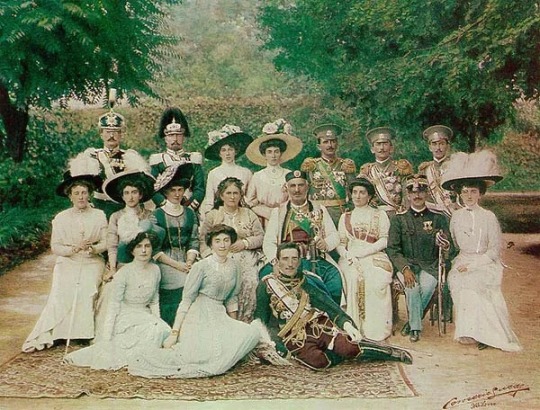
Apart from the Queen of Italy, whose marriage was exceptionally brilliant, the other Princesses of Montenegro were all wedded to men with numerous advantages of position and fortune. The eldest, Militza, became the wife of the Grand Duke Peter Nicolaievitch, with whom she has been always exceptionally happy. The second, Anastasia, or Stana, after a few years of a tempestous and stormy union with Duke George of Leuchtenberg, succeeded in obtaining a divorce from him, and remarried very soon afterwards the Grand Duke Nicholas, the brother of her sister's husband and the present Commander-in-Chief of the Russian Army. As for the third one, Princess Anna, she is the consort of handsome Prince Francis Joseph of Battenberg, the brother-in-law of Princess Beatrice of Battenberg, and the most amiable man. The Princesses Xenia and Vera are still unmarried and the King is not without hope that he may yet in time arrange a union for one or the other of them with another member of the Russian Imperial Family, either one of the sons of the same Grand Duke Constantine who is the father-in-law of the Princess Hélène of Servia, or with one of the boys of Grand Duke Alexander and of the Grand Duchess Xenia, the sister of the Tsar. He has been so lucky hitherto in the establishment of his children that he is in a certain sense justified in indulging in such an ambition; and one thing is certain, and that is, that if such a marriage ever takes place it will be immensely popular in Russia, where Montenegro and its ruler are in possession of the warmest sympathies, and count far more partisans than is generally known in the rest of Europe.
#Grand Duchess Militza#Queen Elena of Italy#Grand Duchess Stana#Princess Anna of Battenberg#Princess Xenia of Montenegro#Princess Vera of Montenegro#montenegrin royal family#1910s#anecdote
7 notes
·
View notes
Text

Coronation of Nicholas I of Montenegro. Nicholas I of Montenegro with his wife, sons, daughters, grandchildren and sons- and daughters-in-laws
Back row: Grand Duke Piotr Nikolaievich Romanov of Russia, Franzjos Battenberg, Princess Vjera, Princess Ksenija, Kronprinz Danilo, Prince Mirko, Prince Petar ... Middle row: Milica-Jutta (wife of Kronprinz Danilo), Princess Ana, Princess Jelena, Queen Milena, King Nikola, Princess Milica, King Vittorio-Emanuele III of Italy, Princess Natalija (wife of prince Mirko).
Seated: Princess Elena Petrovna Romanova of Russia,Princess Marina Petrovna Romanova of Russia, Aleksaidar of Serbia.
The Romanov connection
•Princess Milica of Montenegro marries Grand Duke Peter Nikolaevich Romanov of Russia.They have three children
•Princess Anastasia of Montenegro marries Grand Duke Nikolai Nikolaevich Romanov of Russia.
In her first marriage with Prince George Maximilianovich Romanowsky, 6th Duke of Leuchtenberg,who is the son of Grand Duchess Maria Nikolaevna Romanova of Russia,sister to Tsar Alexander ll.They have three children.
•Princess Jelena of Serbia,who is the daughter of the eldest child,Princess Zorka of Montenegro marries Prince Ioann Konstantinovich Romanov of Russia.They have children.
•Princess Anna of Montenegro.Marries Prince Francis Joseph of Battenberg.His brother is Prince Louis of Battenberg,,,,Empress Alexandra Feodorovna of Russia's brother-in-law.
2 notes
·
View notes
Photo
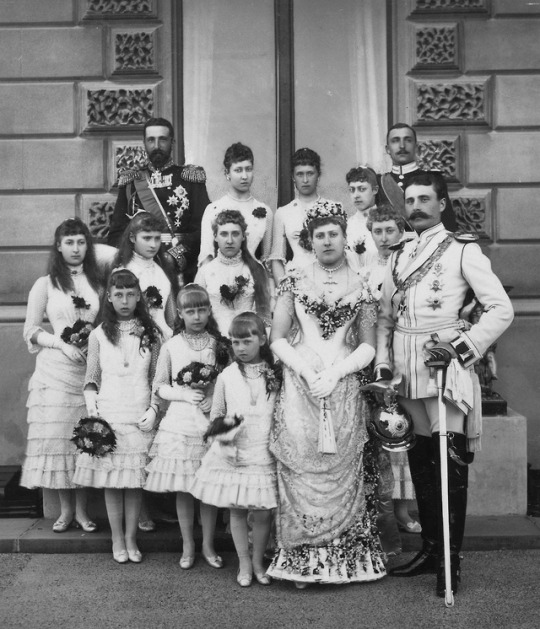
Princess Beatrice and Prince Henry of Battenberg with many of Beatrice’s nieces and two of Henry’s brothers, 23rd July 1885.
Back row: Prince Alexander (‘Sandro’) of Battenberg, Princess Louise of Wales, Princess Irene of Hesse, Princess Victoria (‘Toria’) of Wales, Prince Francis Joseph of Battenberg
Middle row: Princess Maud of Wales, Princess Alix (‘Alicky’) of Hesse, Princess Marie Louise (‘Louie’) of Schleswig-Holstein, Princess Helena Victoria (‘Thora’) of Schleswig-Holstein
Front row: Princesses Victoria Melita (‘Ducky’), Marie (‘Missy’) and Alexandra (‘Sandra’) of Edinburgh, Princess Beatrice and Prince Henry (‘Liko’) of Battenberg
“the sweet young Bridesmaids, 10 in number, all, Beatrice's nieces, stood awaiting us at the Gate. The little ones looked so dear; Louise of Wales & Irène walked first after Beatrice, then Victoria of Wales, & Victoria of Schleswig Holstein, Maud of Wales & Alicky, Louise of Schleswig Holstein, & little Missy, & lastly Ducky & little Sandra. They were dressed in white, with bunches of red & white carnations on the front of the dress. [...] all the Royalties were photographed on the Terrace [...] also Beatrice & Liko, his 2 Brothers & the Bridesmaids.”
- Queen Victoria’s Diary, 23rd July 1885
#alix of hesse#alexandra feodorovna#alexander of battenberg#louise of wales#irene of hesse#victoria of wales#francis joseph of battenberg#maud of wales#marie louise of schleswig holstein#helena victoria of schleswig holstein#victoria melita of edinburgh#marie of edinburgh#alexandra of edinburgh#princess beatrice#henry of battenberg#1885#1880s#british royalty#british royals#queen victoria diary entry
38 notes
·
View notes
Photo


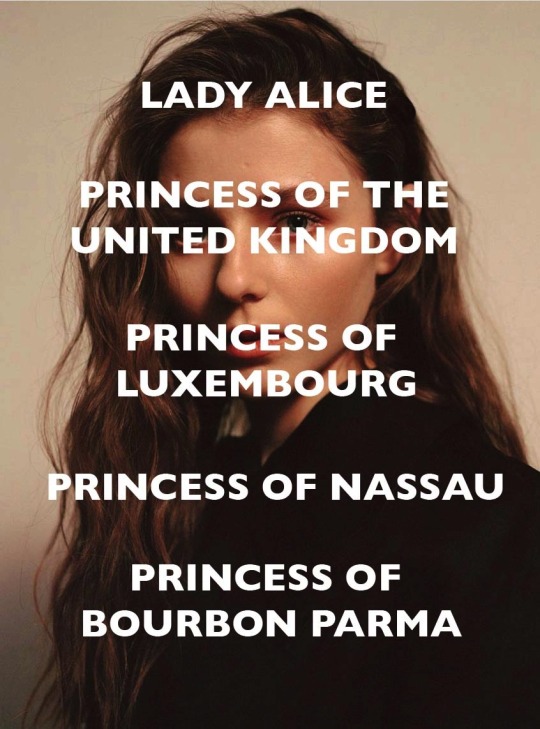
The Three Graces
The daughters of King Henry IX and Queen Isabella
Princess Mary Astrid of Sweden 2019-2053
Princess Mary Astrid was the firstborn daughter in 2019. She was named after her grandmother Princess Marie Astrid of Luxembourg. During her childhood, Mary Astrid’s titles went through several changes. She was born a lady as the great-grandchild of the monarch, then became a Princess of Sussex before being demoted to a lady again upon her uncle’s ascension as King William V.
Her grandfather’s death in 2029 followed by her uncle's abdication the same year placed her father on the throne. Unlike her siblings, Mary Astrid married later, at the age of 25 to Prince Oscar of Sweden. The marriage was never happy as Mary Astrid only found an escape from her Catholic-Habsburg family.
The marriage produced three children including her granddaughter Princess Astrid Bernadotte who later became Queen of Sweden through her marriage. Like many of her siblings, Mary Astrid died in a car accident in France in 2053 several months after the death of her mother, Queen Isabella.
Princess Elisabeth of Liechtenstein 2021-2053
Princess Elisabeth was the second daughter, born in 2021. She was named after her great-grandmother Queen Elizabeth II and Queen Elisabeth of the Belgians. Like her elder sister, Elisabeth’s childhood was marked with a change in titles and the ascension of her father in 2029.
A failed engagement between Prince Franz Joseph of Liechtenstein and Elisabeth’s older sister, Princess Mary Astrid occurred in 2041. Elisabeth took her elder sister's place, accepting the marriage to repay her mother’s debts to the Liechtenstein princely family. The marriage occurred in 2042 and produced five children. Her grandson Franz Joseph became The Prince of Liechtenstein after the death of his grandfather Franz Joseph.
Princess Alice of Luxembourg 2022-2053
Princess Alice was the third daughter, born in 2022. She was named after her great-great-grandmother Princess Alice of Battenberg, later Princess Andrew of Greece and Denmark who was in turn named after her own grandmother Alice, Grand Duchess of Hesse who was born a Princess of the United Kingdom as a daughter of Queen Victoria.
Unlike her elder siblings Alice had married for love, falling in love with her second cousin Prince Liam of Nassau, later Prince Liam of Luxembourg. The marriage produced four children and her descendants include King Baudouin II of the Belgians; Liam, Prince Consort of the Netherlands, and Prince Thierry of Nassau who later became Archbishop of Luxembourg and finally Pope Francis II.
4 notes
·
View notes
Photo

Consuelo Vanderbilt Balsan, Duchess of Marlborough (1877-1964)
Consuelo Vanderbilt was one of the most highly sought-after heiresses of America’s Gilded Age: the period between 1870-1900 when US industrialists became the richest men in the world. The only daughter of railroad millionaire William Vanderbilt and his formidable wife Alva, Consuelo was pre-destined to marry into the British aristocracy like her godmother Consuleo Yznaga who had married the heir to the 7th Duke of Manchester.
In 1886 William Vanderbilt inherited $65 million on the death of his father. Wishing to upstage her social rival Mrs Astor, Alva commissioned a Rococo summer house she christened the Marble House on Newport Rhode Island that was modelled on Marie Antoinette’s Petit Trianon at Versailles and the largest privately-owned yacht in the world called the Alva. Her palatial Vanderbilt mansion on 5th Avenue could comfortably host 1000 people at a legendary masquerade ball she held in 1883 costing $3 million.
Though surrounded by such opulence, Consuelo Vanderbilt was schooled strictly by a series of governesses and tutors. Her mother Alva forced the pretty child to wear a steel corset contraption that would keep her spine ramrod straight, she was whipped with a riding crop when disobedient and was forced to abide by Alva’s golden rule ‘I do the thinking. You do as you are told’. Consuelo blossomed into the beau ideal of a Belle Epoque beauty: slim, delicately pretty with a swan-like neck and thick, dark, luxuriant upswept hair. She had five proposals of marriage including one from Prince Francis Joseph of Battenberg that Consuelo declined.

Lady Paget, American-born Minnie Stevens, introduced Consuelo Vanderbilt to Charles Spencer-Churchill, who had become 9th Duke of Marlborough in 1892 inheriting the monolithic Blenheim Palace and crippling debts. Consuelo disliked ‘Sunny’ Marlborough and in a rare act of independence became secretly engaged to New York socialite Winthrop Rutherford. Alva fought back: first threatening to have Rutherford murdered then pretending that Consuelo’s disobedience was quite literally killing her. According to Consuelo, she was locked in her room until she agreed to marry the 9th Duke who had negotiated a settlement of $42.5 million in railroad stock from the Vanderbilts plus an annual allowance of $100,000 for he and his future wife.
The 9th Duke married Consuelo Vanderbilt in New York in 1895 telling her after the ceremony that he was in love with another woman and that he ‘despised anything that was not British’. The Duke and Duchess of Marlborough returned to England via Paris where the duke dressed her like a doll at Worth and replenished the family jewels with Vanderbilt money acquiring pearls that belonged to Catherine the Great and the Empress Eugenie. As Consuelo wrote in her autobiography The Glitter and the Gold (1953), ‘jewels never gave me pleasure and my heavy tiara invariably produced a violent headache, my dog collar a chafed neck’.
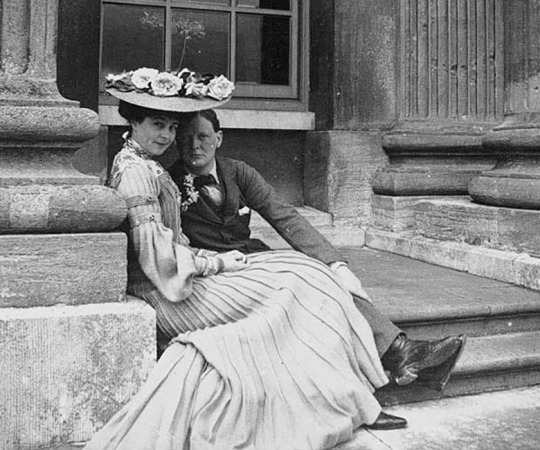
On meeting the Dowager Duchess of Marlborough, Consuelo was told ‘your first duty is to have a child and it must be a son because it would be intolerable to have that little upstart Winston (Churchill) become duke’. Consuelo did produce an heir and a spare, Lord John and Lord Ivo, while also conquering London society and dazzling the Prince of Wales and his Marlborough House Set. Consuelo’s father bought Sutherland House on Mayfair’s Curzon Street for the Marlboroughs to entertain during the London season and Consuelo was inducted into the social round of Marlborough House balls, Royal Ascot, weekends at Sandringham and boxes at the Royal Opera House.
The Glitter and the Gold demonstrates Consuelo’s talent as a perceptive witness to great moments in late Victorian and Edwardian history. She attended the Duchess of Devonshire’s fancy dress ball in 1897, Queen Victoria’s funeral in 1901, the coronation of King Edward VII in 1902 for which she was Queen Alexandra’s canopy bearer and travelled to India for King Edward’s coronation durbar as a guest of Viceroy Lord Curzon. The Marlboroughs travelled to the court of Russia’s last Tsar Nicholas II where Consuelo had a private audience with Queen Alexandra’s sister the Dowager Empress Marie and commented ‘her courtesy to us was favourably compared in court circles with the Tsarina’s failure to give us an audience and the realisation how unpopular the latter’s unsocial nature was making her’.
In 1905 the Marlborough family was painted by John Singer Sargent. The most beautiful duchess in England was also drawn by Hellieu and painted by society artist Boldini. But in 1906 the Duke and Duchess of Marlborough separated. As Consuelo concluded, ‘we had been married eleven years (and) life together had not brought us closer. Time had but accentuated our differences. The nervous tension that tends to grow between people of different temperament condemned to live together had reached its highest pitch’.
The Duchess quit Blenheim Palace and took-up residence in Sutherland House. It was to her credit that the Prince of Wales’s set did not drop her though she spent an increasing amount of time in the company of the aesthetes who called themselves The Souls led by Lady Desborough. Guests at Sutherland House included H. G. Wells, George Bernard Shaw, Sir J. M. Barrie, Margot Asquith, Lady Astor, Lady Cunard and the Grand Duke Dimitri of Russia. She took a small country house, Crowhurst, on the Marlborough estate and – taking a cue from the redoubtable Alva – became a leader of the women’s suffrage movement and a frequent visitor to the Strangers’ Gallery in the Palace of Westminster.

In 1921 the Duke and Duchess of Marlborough formally divorced and Consuelo married dashing French aviator Jacques Balsan who she had first met in Paris at her coming out ball hosted by the Duc de Gramont. It was, in Consuelo’s words, a marriage of love. The 9th Duke of Marlborough married a dazzling American beauty Gladys Deacon. Marcel Proust said of Gladys, ‘I never saw a girl with such beauty, such magnificent intelligence, such goodness and charm’. The marriage ended acrimoniously with the 9th Duke evicting Gladys from Blenheim after she had ruined her beauty injecting her face with paraffin wax.
Consuelo and Jacques Balsan lived an idyllic existence at their chateau St Georges-Motel near Fontainebleu where cousin Winston Churchill and his wife Clementine were frequent visitors. The aging Alva Vanderbilt bought a neighbouring chateau to be near her daughter. The 9th Duke died in 1934 and Consuelo was once again welcome at Blenheim Palace as a guest of her son the 10th Duke. The Balsans were evacuated from France in 1940 at the onset of the Nazi invasion and set-up home in Casa Alva south of Palm Beach in Florida.
Consuelo Vanderbilt Balsan died in Long Island, New York, in 1964 and was buried on the Blenheim estate next to her younger son Lord Ivo Spencer-Churchill.
18 notes
·
View notes
Photo
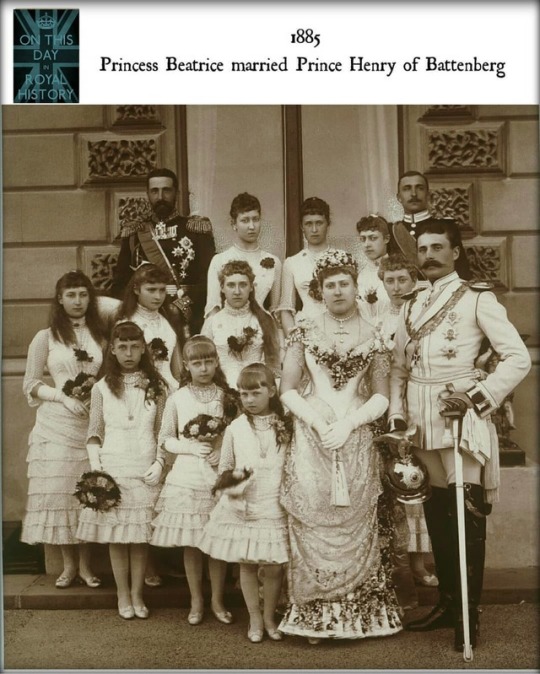
On This Day In History . 23 Jul 1885 . Princess Beatrice married Prince Henry of Battenberg . . ◼ Beatrice and Henry were married at Saint Mildred's Church at Whippingham, near Osborne, on 23 July 1885. Beatrice, who wore her mother's wedding veil of Honiton lace, was escorted by the Queen & Beatrice's eldest brother, the Prince of Wales (later king Edward VII). . ◼ Princess Beatrice was attended by ten royal bridesmaids from among her nieces: Princess Alix & Princess Irene of Hesse & by Rhine; Princess Alexandra, Princess Marie, & Princess Victoria Melita of Edinburgh; Princess Louise, Princess Maud, & Princess Victoria of Wales; Princess Marie Louise & Princess Helena Victoria of Schleswig-Holstein. The bridegroom's supporters were his brothers, Prince Alexander of Bulgaria & Prince Francis Joseph of Battenberg. . ◼ The ceremony ended with the couple's departure for their honeymoon at Quarr Abbey House, a few miles from Osborne. . . . #onthisdayinhistory #thisdayinhistory #theyear1885 #d23jul #PrincessBeatrice #HouseofSaxeCoburgandGotha #PrinceHenryofBattenberg #History #royalfamily #royalwedding #British #Greatbritain #Heritage #britishroyalty #Britishroyals #Britishmonarchy #Vintagephoto #vintage #VintagePhotography #Wedding #Bride #WeddingDress #Bridesmaids #Whippingham #Royalhistory #Brideandgroom #instahistory #Royalweddings #Onthisday . 📷 Royal Collection Trust/© Her Majesty Queen Elizabeth II 2018 (at St Mildred's Church, Whippingham) https://www.instagram.com/p/B0QcZpyg4AQ/?igshid=1px2j20nrzx5h
#onthisdayinhistory#thisdayinhistory#theyear1885#d23jul#princessbeatrice#houseofsaxecoburgandgotha#princehenryofbattenberg#history#royalfamily#royalwedding#british#greatbritain#heritage#britishroyalty#britishroyals#britishmonarchy#vintagephoto#vintage#vintagephotography#wedding#bride#weddingdress#bridesmaids#whippingham#royalhistory#brideandgroom#instahistory#royalweddings#onthisday
1 note
·
View note
Text
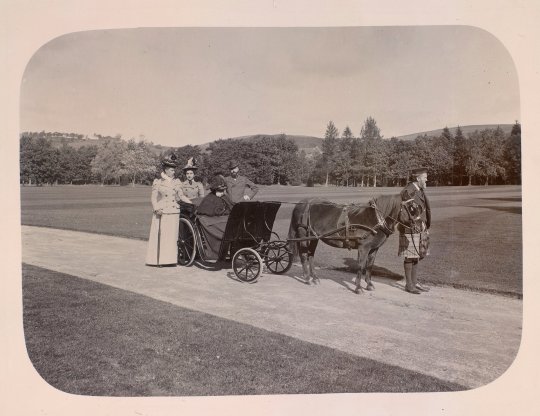
George Gordon holding pony's bridle (sheltie). Queen Victoria sitting in open carriage with (l-r) Duchess of York, Princess Francis Joseph of Battenberg and Prince Francis Joseph of Battenberg. Taken in the grounds of Balmoral. September 1897.
Source: Royal Collection
#queen victoria of the united kingdom#queen mary of the united kingdom#princess francis joseph of battenberg#princess anna of montenegro#prince francis joseph of battenberg#1897#1890s#british royal fandom#british royalty#british royal
59 notes
·
View notes
Text
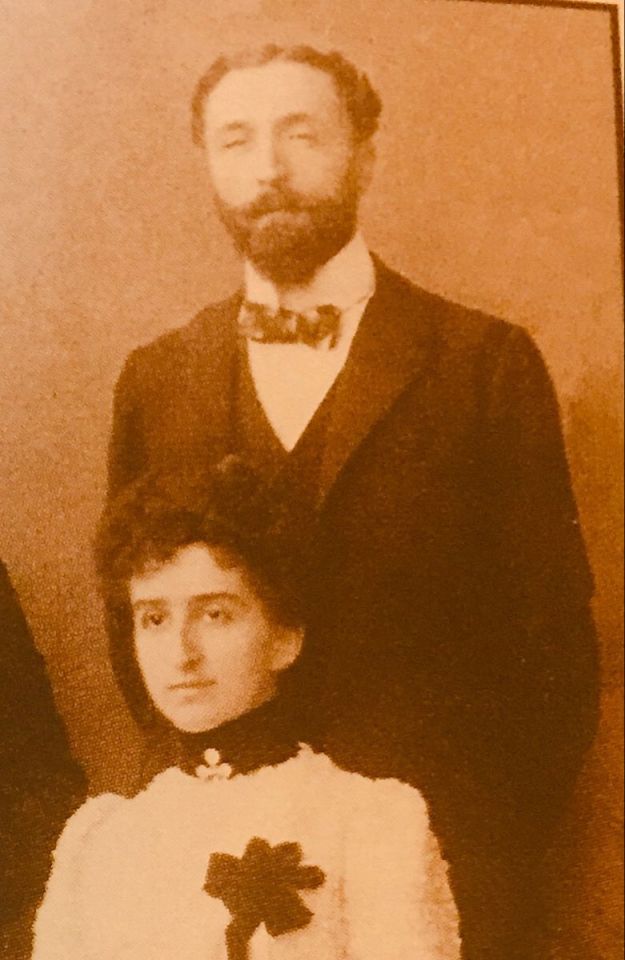
Prince Francis Joseph of Battenberg and his wife, Princess Anna née Montenegro.
Source: Pinterest.
#prince francis joseph of battenberg#princess francis joseph of battenberg#princess anna of battenberg#princess anna of montenegro#montenegro#battenberg#hesse#hesse-darmstadt#german royalty#german royal
25 notes
·
View notes
Text

Prince Francis Joseph of Battenberg.
19 notes
·
View notes
Text
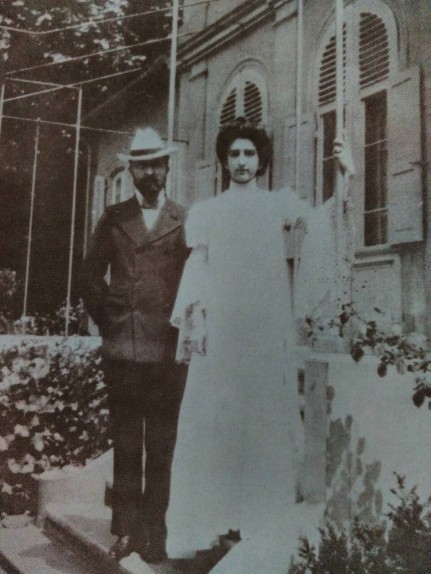
Princess Francis Joseph of Battenberg and his wife, Princess Anna née Montenegro.
Although they had no children, their marriage was happy.
Source: Cetinje State Museum
#Prince Francis Joseph of Battenberg#Princess anna of Montenegro#princess anna of Battenberg#Battenberg#Montenegro#german royal#german royalty
35 notes
·
View notes
Text
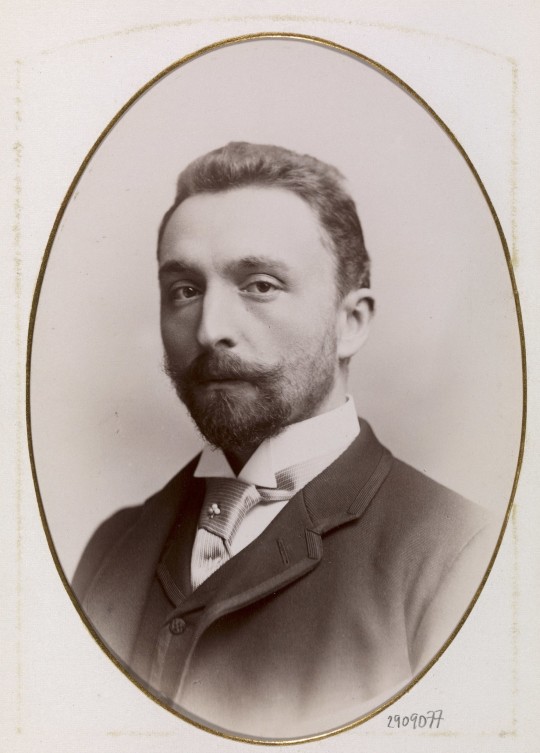
Prince Francis Joseph of Battenberg, 1880s.
He was the youngest child of Prince Alexander of Hesse and by Rhine and Countess Julia Hauke, Princess of Battenberg. He was born in Padua, Italy on September 24, 1861.
Following his schooling, Francis Joseph received a military education in Potsdam. He then served in the Bulgarian Military, while his brother Alexander was the Reigning Prince of Bulgaria from 1879-1886.
While in London in 1894, Francis Joseph met the American heiress Consuelo Vanderbilt. Smitten, he was one of several men who proposed, but the only who her mother allowed her to consider. Consuelo did not like him at all, and refused his offer of marriage. She later went on to marry the 9th Duke of Marlborough.
Several years later, while visiting Queen Victoria of the United Kingdom who was on holiday in Cimiez, France, Francis Joseph met Princess Anna of Montenegro. She was the daughter of King Nikola I of Montenegro and Milena Vukotić, and was in Cimiez visiting her sister and brother-in-law. The two quickly fell in love, and their engagement was announced. They married in Cetinje, Montenegro on May 18, 1897 in both Eastern Orthodox and Protestant ceremonies. From all accounts, the marriage was a very happy one, but the couple did not have any children.
In the years leading up to World War I, Franz Joseph and his wife spent much of their time living in Darmstadt, but were advised to leave the country when the war broke out. They left Germany and settled in Switzerland. As the war progressed, they found their financial situation more and more precarious, and sometimes struggled to make ends meet. After 1920, they began to receive some financial support from Edwina Mountbatten, the wife of Francis Joseph’s nephew, the future Earl Mountbatten of Burma. Until her own death in 1960, Edwina continued to send money to Princess Anna as well.
Prince Francis Joseph died in Territet, Switzerland on July 31, 1924, having outlived all of his siblings. He is buried in the Schaffhausen Forest Cemetery in Schaffhausen, Switzerland.
Source: Royal Collection
#Prince Francis Joseph of Battenberg#Battenberg#german romanticism#german royal#german royalty#1880s
20 notes
·
View notes